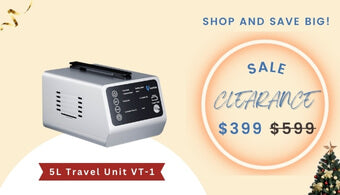Portable nebulizers have become essential devices for delivering medication directly to the lungs, especially for individuals with respiratory conditions. Portable nebulizers, in particular, offer convenience and flexibility, making them a popular choice for many. But how do nebulizers work, and when should you consider using one?
In this comprehensive guide, we will delve into the intricacies of portable nebulizers, exploring their functions, benefits, and appropriate usage.
How Do Nebulizers Work?
Portable nebulizers are medical devices that convert liquid medications into a fine mist, which is then inhaled. This process allows for the direct delivery of medication to the lungs, bypassing the digestive system.
There are two primary types of nebulizers:
1. Compressor Nebulizers
- How they work: A compressor nebulizer uses a small, quiet motor to create a high-pressure airflow. This airflow passes through a chamber containing the liquid medication. The pressure forces the liquid into tiny droplets, which are then expelled into the air as a mist.
- Advantages: Compressor nebulizers are generally more reliable and can handle a wider range of medications. They are also often quieter than ultrasonic nebulizers.
- Disadvantages: They can be larger and heavier, making them less portable.
2. Ultrasonic Nebulizers
- How they work: Ultrasonic nebulizers use high-frequency sound waves to vibrate a piezoelectric crystal. This vibration creates a ripple effect in the liquid medication, causing it to break down into tiny droplets. These droplets are then dispersed into the air as a mist.
- Advantages: Ultrasonic nebulizers are typically smaller and lighter, making them more portable. They are also often quieter than compressor nebulizers.
- Disadvantages: They may not be as effective for some medications, and they can produce a slightly warmer mist.
Key components of a portable nebulizer
- Nebulizer chamber: The container that holds the liquid medication.
- Compressor or ultrasonic transducer: The device that creates the airflow or vibrations.
- Mouthpiece or mask: The device used to inhale the mist.
- Air tubing: The tube that connects the nebulizer to the mouthpiece or mask.
The inhalation process
- The liquid medication is placed in the nebulizer chamber.
- The compressor or ultrasonic transducer is turned on.
- The liquid medication is converted into a fine mist.
- The user inhales the mist through the mouthpiece or mask.
- The medication reaches the lungs, where it can be absorbed and take effect.
Common Uses for Nebulizers
Nebulizers are commonly used to treat various respiratory conditions, including:

- Asthma: For managing asthma attacks and preventing future episodes.

- Chronic Obstructive Pulmonary Disease (COPD): To alleviate symptoms and improve lung function.
- Cystic Fibrosis: To help clear mucus from the lungs and prevent infections.
- Bronchitis: To treat acute and chronic bronchitis.
- Pneumonia: To aid in recovery and prevent complications.
- Allergic Rhinitis (Hay Fever): To reduce nasal congestion and inflammation.
When to Consider a Portable Nebulizer
If you or a family member experience any of the following symptoms, a nebulizer may be beneficial:

- Frequent coughing or wheezing
- Difficulty breathing
- Shortness of breath
- Chest tightness or pain
- Mucus build-up in the lungs
- Recurring respiratory infections
Choosing the Right Nebulizer
When selecting a nebulizer, consider the following factors:
- Portability: If you need to use the nebulizer frequently outside the home, a portable model is essential.
- Ease of Use: Look for a nebulizer with a simple design and easy-to-follow instructions.
- Noise Level: If you're sensitive to noise, opt for a quieter model.
- Medication Compatibility: Ensure the nebulizer is compatible with your prescribed medication.
OxygenVIP: Your Trusted Source for FDA-Approved Nebulizers
When choosing a nebulizer, it's crucial to prioritize safety and effectiveness. FDA (Food and Drug Administration) approval ensures that a medical device has undergone rigorous testing and meets specific quality standards. FDA-approved nebulizers are designed to provide reliable and consistent performance, giving you peace of mind in your respiratory care.
OxygenVIP's FDA-Approved Nebulizers
At OxygenVIP, we are committed to offering only the highest quality products. Our nebulizers are FDA-approved, guaranteeing their safety and efficacy. These devices are designed to meet the needs of individuals with various respiratory conditions, providing reliable relief and improved breathing.
Key Features of OxygenVIP's Nebulizers
- Microporous Atomization Technology: Our nebulizers create a fine mist with high mist volume, ensuring quick and efficient absorption of medication.
- Eco-friendly Lithium Battery: Powered by a rechargeable lithium battery, our nebulizers are convenient and environmentally friendly.
- Intuitive LED Display: The easy-to-read LED screen provides clear information about battery status, liquid level, and operating mode.
- Quiet Operation: Our nebulizers operate quietly, minimizing disturbances and allowing for comfortable use in any setting.
- Portability and Convenience: Compact and lightweight, our nebulizers are easy to carry and use on the go.
Choose from our range of FDA-approved nebulizers to find the perfect fit for your needs:
- Rechargeable Portable Nebulizer MY-135B with LED Display: This advanced model offers a range of features for optimal nebulization.
- Portable Nebulizer MY-133 with Medicine Cup Cover: A convenient and portable option with a medicine cup cover for easy medication handling.
- Rechargeable Portable Nebulizer MY-132B for Adults & Kids: A versatile nebulizer suitable for both adults and children.
Conclusion
Nebulizers are valuable tools for managing respiratory conditions and improving overall lung health. By understanding when and how do nebulizers work, you can effectively treat your symptoms and enhance your quality of life.
By choosing OxygenVIP's FDA-approved nebulizers, you're investing in a reliable and effective respiratory care solution. Our commitment to quality and customer satisfaction ensures that you receive the best possible products and support.



















